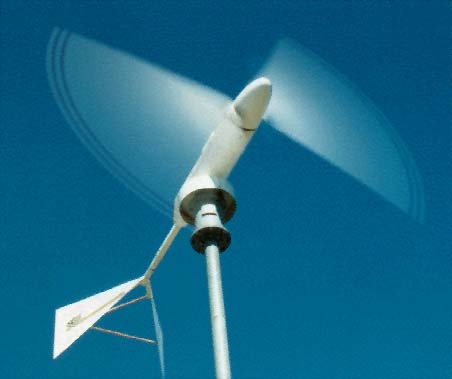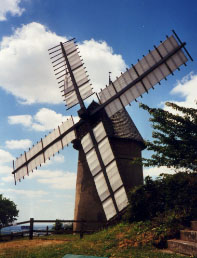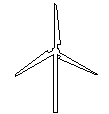Wind Energy
|
 |
As wind hits the blades of a wind machine, such as a windmill, it begins to spin the blades. This in turn spins an engine called a turbine. The turbine is designed to produce electricity as it spins. The electricity that is produced is then sent to a battery, where it is stored for use or is set to the National Grid for people all over the country to use. The KE of the air molecules is transferred to rotational KE in the turbine and then the generator changes it to electrical energy (by electromagnetic induction). |
History
 Windmills
have been used for many centuries for pumping water and milling grain.
There is evidence that wind energy was used to propel boats along the
Nile River as early as 5000 B.C. Within several centuries before Christ,
simple windmills were used in China to pump water.
Windmills
have been used for many centuries for pumping water and milling grain.
There is evidence that wind energy was used to propel boats along the
Nile River as early as 5000 B.C. Within several centuries before Christ,
simple windmills were used in China to pump water.
They became redundant in many places as the power age
of steam and electricity dawned but now there has been a revival of interest
in wind energy and attempts are underway all over the world to re-introduce
it in cost-effective wind energy conversion systems
In developing countries, wind power can play a useful role for water supply
and irrigation
(windpumps) and electrical generation (wind generators).
The power from the wind is proportional to the cube of wind velocity, air density and the area swept out by the blades. Therefore the faster the air transfer and the large the blades the greater the amount of energy that can be converted.
 |
Wind turbines vary in size, and therefore power ratings. The largest machines have propellers that span the more than the length of a football field and stand 20 building stories high. One that big can produce enough electricity to power 1400 homes. A small home-sized wind machine has rotors between 8 and 25 feet in diameter and stands upwards of 30 feet and can supply the power needs of an all-electric home or small business. Wind farms have many wind machines all connected together - they can power a small town. |
Follow me...







